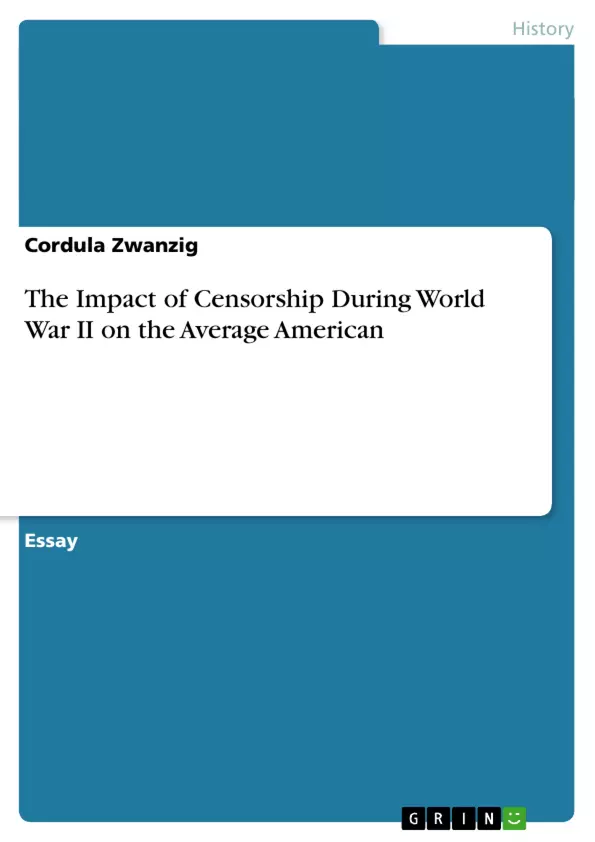“The war came as a great relief, like a reverse earthquake, that in one terrible jerk shook everything disjointed, distorted, askew back into place. Japanese bombs had finally brought national unity to the U.S.”.
All nations participating in the Second World War used one or another strategy to commit their countries to war. Government-conducted manipulation of informing a people can be differentiated into an active channel, propaganda, and a non-active one, censorship. Even though, propaganda and censorship usually cohere, this essay shall only throw a light on how US-American censorship shaped the average citizen’s perception before, while, and after World War II.
Inhaltsverzeichnis (Table of Contents)
- The Impact of Censorship During World War II on the Average American
- Censorship as a Tool of Control
- The Pre-War Media Landscape
- The Impact of World War I
- The Rise of Isolationism
- The Shift to War
- The Office of Censorship
- The Strategies of Censorship
- The Voluntary Censorship Code
- The Impact on Public Perception
Zielsetzung und Themenschwerpunkte (Objectives and Key Themes)
This essay examines the impact of censorship on the average American during World War II. It explores how government-conducted manipulation of information shaped public perception before, during, and after the war.
- The role of censorship in shaping public opinion during wartime
- The impact of pre-war media landscape on censorship effectiveness
- The influence of World War I on American attitudes towards censorship
- The relationship between censorship and propaganda
- The impact of censorship on American public perception of the war effort.
Zusammenfassung der Kapitel (Chapter Summaries)
The essay begins by defining censorship as a form of mass media control used by governments to protect national security. It then explores the pre-war media landscape in the United States, highlighting the widespread influence of newspapers, magazines, radio, and cinema. The essay discusses the impact of World War I on American attitudes towards censorship, highlighting the public's fear of manipulation and the rise of isolationist sentiment.
The essay then examines the shift to war, analyzing the impact of Pearl Harbor and the subsequent creation of the Office of Censorship. It discusses the strategies employed by the Office of Censorship, including the "strategy of truth" and the use of voluntary censorship. Finally, the essay explores the impact of censorship on public perception, highlighting the influence of censorship on public understanding of the war effort and the role of censorship in maintaining morale.
Schlüsselwörter (Keywords)
This essay focuses on censorship, propaganda, public perception, media control, World War II, American history, Office of Censorship, and the impact of war on society.
- Citar trabajo
- Cordula Zwanzig (Autor), 2013, The Impact of Censorship During World War II on the Average American, Múnich, GRIN Verlag, https://www.grin.com/document/268037



